TVL, to je peněz 👀👀👀👍👍👍😁😁😁
Krása... 🙂
British government to allocate 7.5 million to Celtic coin hoard research and public engagement
Categories: Minting - Numismatics , Treasures , Nálezy nejenom s detektorem ve Velké Británii a Irsku
The Le Catillon II treasure was discovered in 2012 by two detectorist friends , Reg Mead and Richard Mile, after searching for it for over thirty years. The coin depot, dating from around 40 BC, was eventually discovered in a field in east Jersey at a depth of just over 1m. The Crown later sold it off to the Jersey Government, while pledging to financially support its research and education.
Mead and Miles initially found 60 silver and one gold Celtic coin. Subsequent detection led to the discovery of a huge number of Iron Age and Roman coins, which were recovered in one solid block along with the soil. In addition, the excavation revealed evidence of wooden posts, probably from the hut, and large quantities of burnt daub and pottery dating to the late Iron Age and early Roman periods. The slag and kiln lining, together with some bisected coins, suggest that the coins would have been melted down and possibly minted anew.
The collection contains a total of 69,347 coins and many other artefacts, such as the largest collection of twistednecklaces, a cloth bag of ingots, gold and silver jewelry, and other items. The whole assemblage measured approximately 140 cm x 70 cm and was 15 cm thick, and experts took many months to dismantle it. The treasure was claimed by the Crown in accordance with the customary law of the Island of Jersey. Initial estimates put the value at over £10 million. Two years ago the council paid £4.25 million (about £128 million) for it from the Civil Asset Recovery Fund, which is money raised from seized accounts and criminal assets.
In virtually the same field, a coin depot called 'Le Câtillon I' was ploughed up on 22 January 1957. But because it was not yet claimed by the Crown at the time, most of the coins disappeared into private collections. However, in April 2021, the Société Jersiaise and Jersey Heritage bought most of the Le Câtillon I hoard for £38,000 (about 1.14 million crowns) and acquired a total of 1,600 Celtic coins and 35 Iron Age jewels for the Jersey collection. The two treasures are now displayed side by side.
As part of the sale, the then British government agreed to provide £250,000 for education and research to improve public engagement and understanding. Now £90,000 has been allocated: 'We anticipate that these projects will generate valuable knowledge and encourage greater connections between the public and the heritage of the Iron Age islands,' said David Lord, chairman of the Foundation. "The diversity and breadth of research reflects the multi-faceted significance of the Le Câtillon II hoard," he added, noting that the five funded projects in total cover a wide range of research areas, from analysing the specific composition of the hoard to developing educational programmes and materials.
Roman Němec
Sources: bbc.com, archaeology.co.uk, jerseyheritage.org
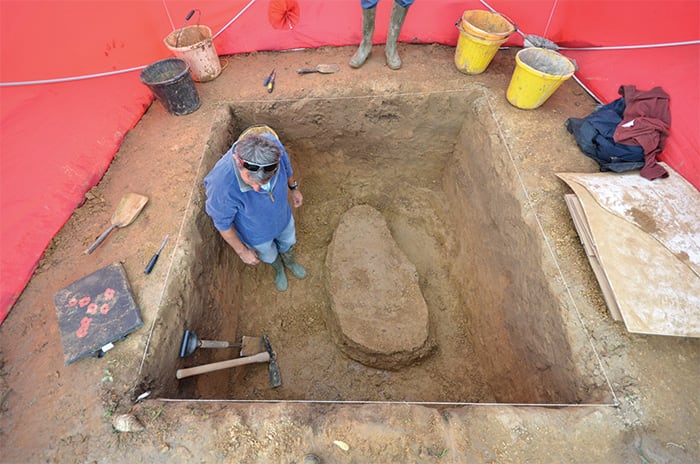 In situ
In situ
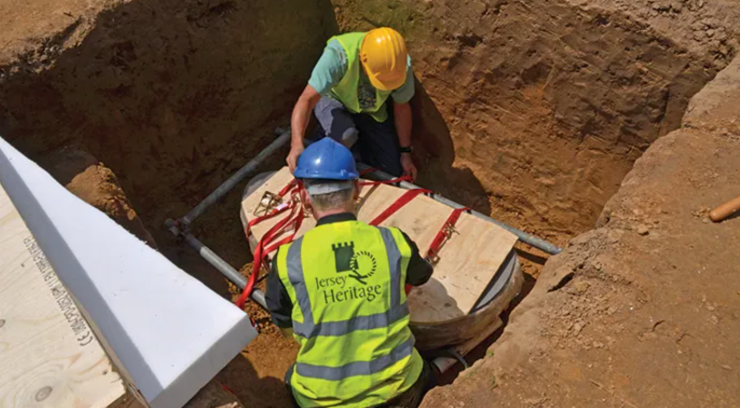 picking up a block in one piece
picking up a block in one piece
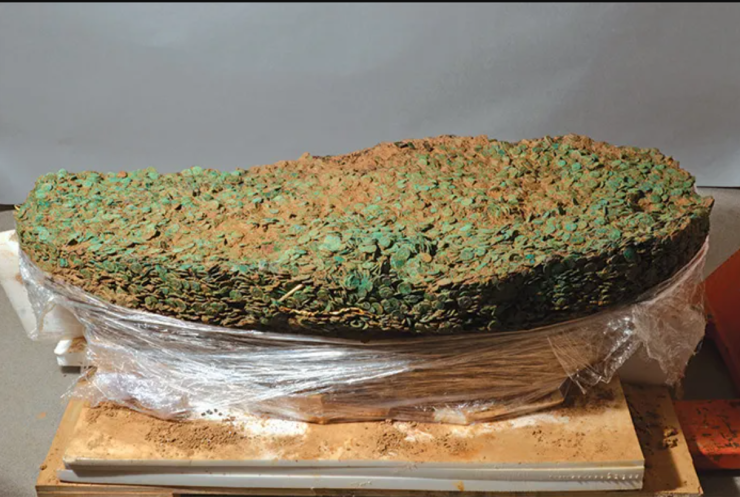 in the laboratory
in the laboratory
 the public was able to watch the dismantling of the hoard live
the public was able to watch the dismantling of the hoard live
 Finders
Finders
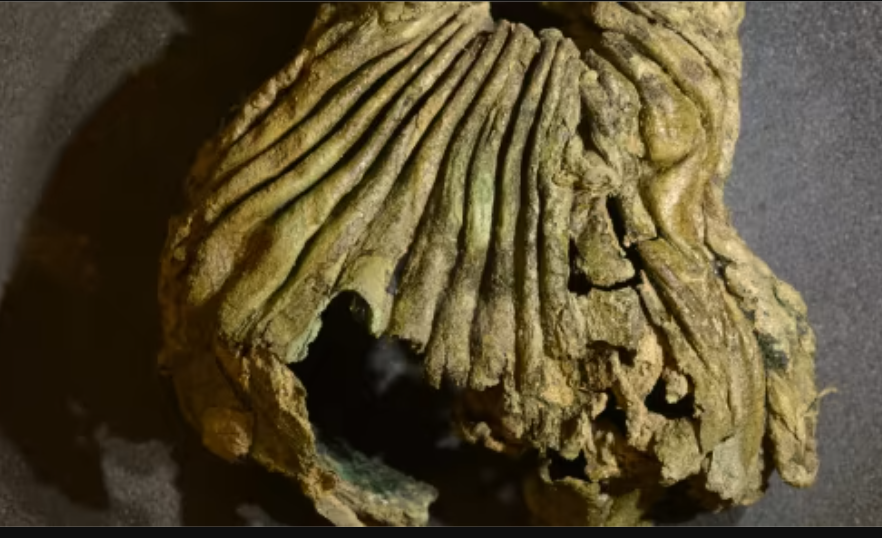 cloth bag - handbag in the treasure
cloth bag - handbag in the treasure
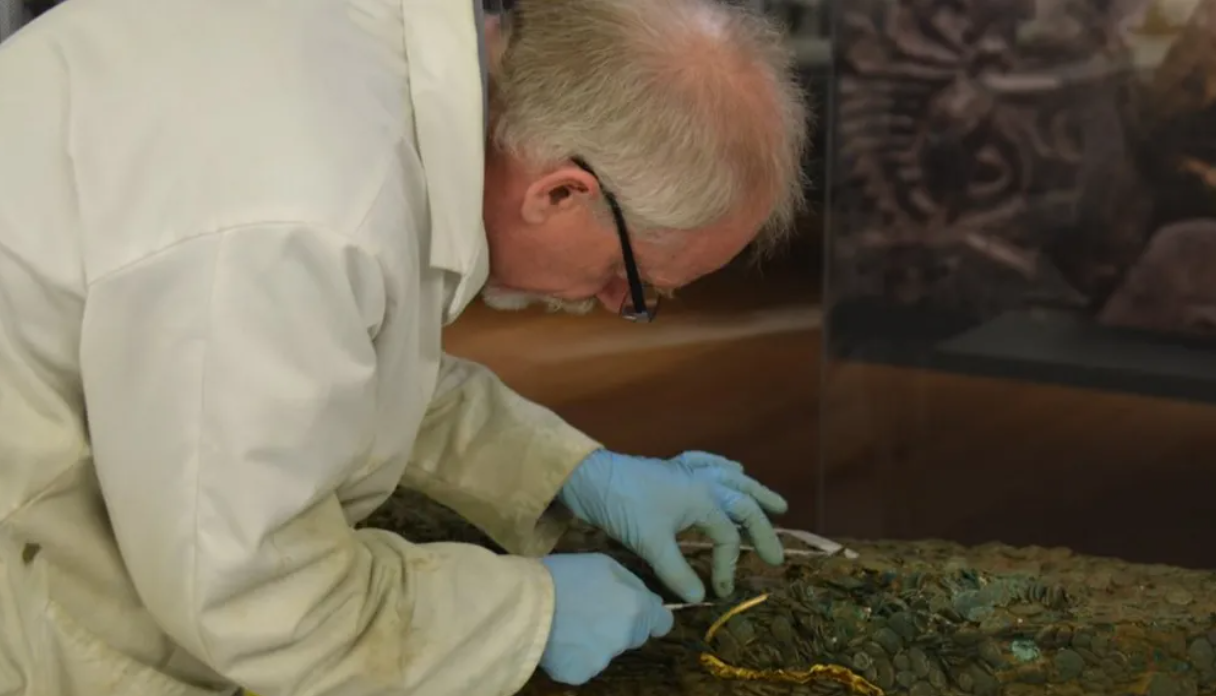 the work of the conservators
the work of the conservators
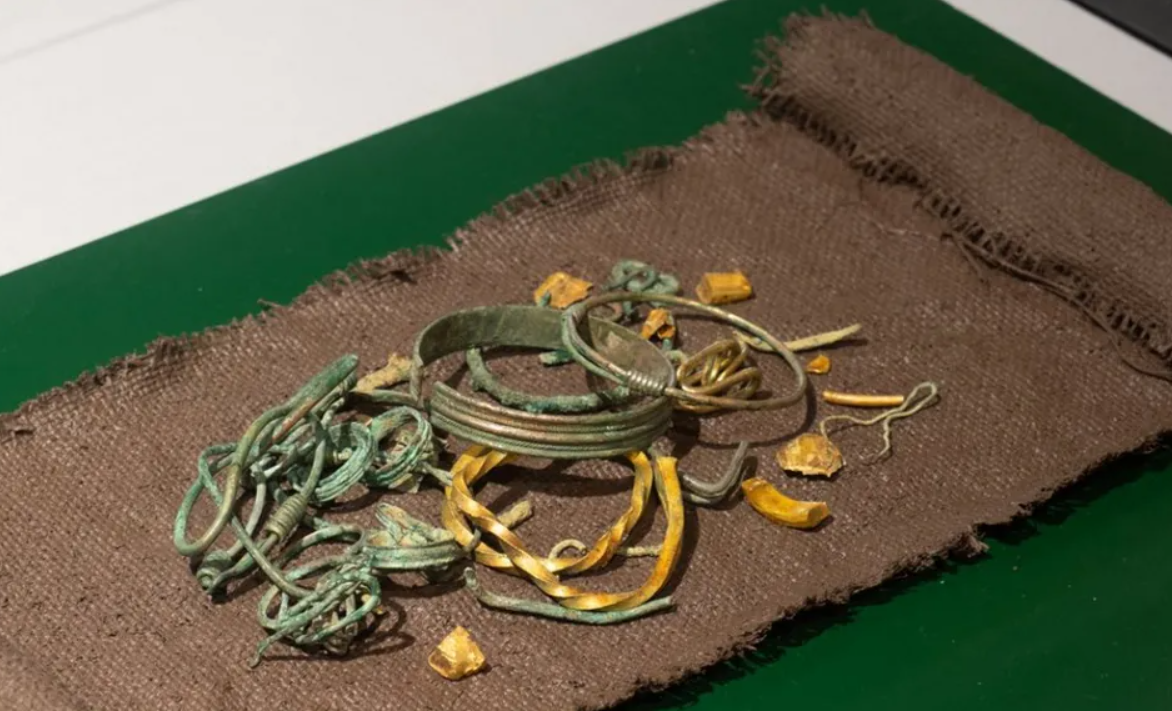 part of the treasure on display
part of the treasure on display
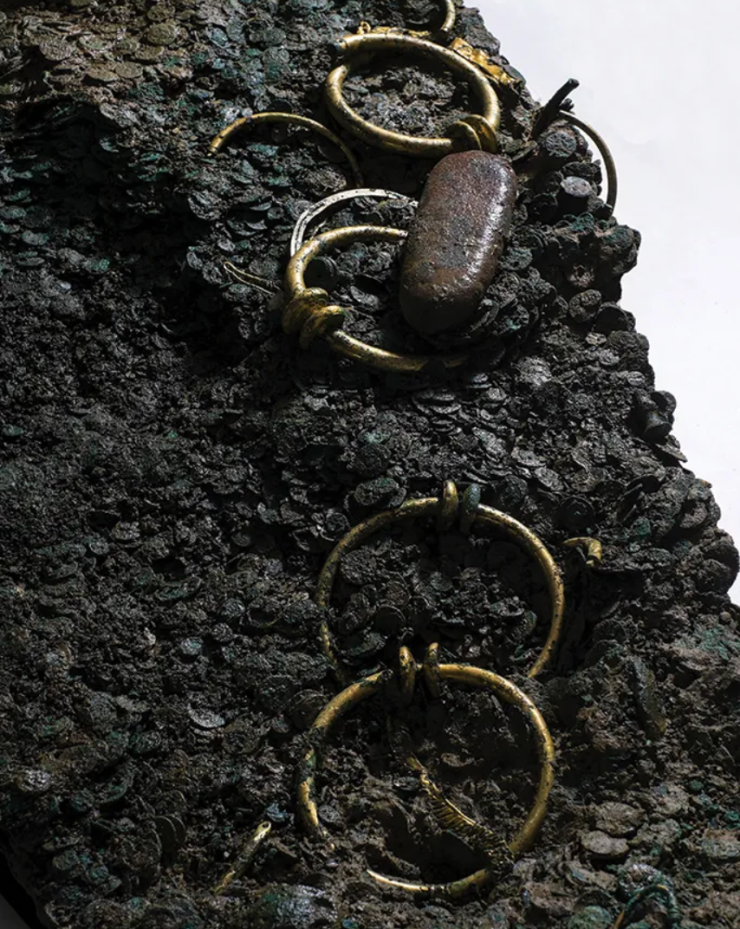 among the coins were a number of gold jewels
among the coins were a number of gold jewels
The article is included in categories:



